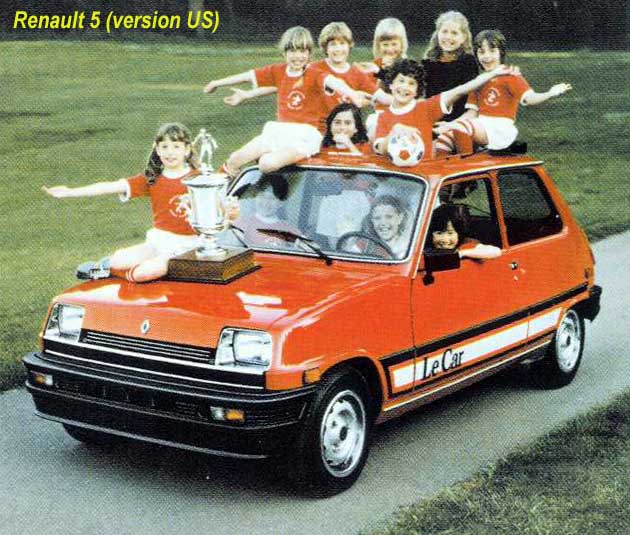The first stop is at UAW Motors (formerly known as Chrysler). Reuters reports (H/T – Gabriel Malor) that a District Court case brought by three Indiana trust funds (the teachers’ union retirement fund, the police retirement fund, and a road construction fund) has been rejected, which means the sale of Chrysler to the UAW/Fiat/US government/Canadian government (technically a hearing on that sale in bankruptcy court) will go on as scheduled tomorrow. The trust funds have been arguing that the federal government does not have any authority to give funds to Chrysler to facilitate the sale, which Judge Thomas Griesa sidestepped in his denial of the motion.
The next stop is Govern…er, General Motors, and their agreement with the UAW. Reuters has a comprehensive summary of that. The Cliff’s Notes version (which assumes that GM doesn’t go into bankruptcy; more on that in a bit):
- In exchange for a $10 billion payment into the VEBA (the retiree health care fund that GM was scheduled to pay $20 billion), the UAW would get a 17.5% common-share stake (with warrants to increase it to 20%), a $6.5 billion, 9% dividend (or $585 million/year) prefered-share stake, and a $2.5 billion note (with an effective APR of 11.1%, and scheduled payments of $1.38 billion in 2013, 2015 and 2017). Previously, GM had offered a 39% common-share stake to the UAW.
- GM reacquires 5 Delphi plants in Michigan, New York and Indiana.
- GM will make its small cars at an idled UAW plant, and will reopen 3 additional assembly and 1 stamping plant if sales “beat expectations”.
- GM will offer buyouts to all its UAW-represented employees.
The $1 billion-17.5% common-share UAW stake would make the common shares worth just over $5.7 billion at issuance of that stake. Reuters notes in that summary that other creditors and the government would get the rest of the common-share stake (more on that in a bit), with no mention of the fate of the current stock. The prior reorganization plan had the government getting 55%, UAW getting 39% in exchange for the $10 billion VEBA liability, unsecured bondholders getting 10%, and the current stockholders getting 1%, with the common shares worth $25.65 billion at issuance assuming the $10 billion-39% common-share UAW stake ratio).
Assuming that the current stockholders would still get 1% of the company, their current $873.1 million net investment (down from $1.25 billion when the previous reorganization plan was announced last month) would dip to $57 million (down from $256 million in the previous reorganization plan, which was rather inflated).
Stop number three is Governme…er, General Motors and the bondholders. Reuters has the interest in the aforementioned $27 billion for 10% stake offer, which expires in a couple hours and requires a 90% acceptance level to stave off bankruptcy, at well under 10%. Meanwhile, Fox Business says that the process could run all the way through the end of the weekend and up to the June 1 GM drop-dead deadline set by the Obama administration.
The final stop is Government (screw it, it’s no longer General) Motors and the government. The New York Times reports that the new deal envisions the federal government taking 70% of the common stock, with another $70 billion-$90 billion in taxpayer money on top of the $20 billion in TARP money already “loaned” anticipated to get GM through the bankruptcy process. Remember that UAW Motors will not be paying back either the $4.3 billion in TARP money that Chrysler received or the $3.2 billion in interim government bankruptcy financing, but will be expected to pay back the $6.2 billion in post-bankruptcy taxpayer money loaned to it. Using that ratio, it looks like there’s $60 billion, give or take $10 billion, down the hole in exchange for $4 billion in Government Motors stock.
Revisions/extensions (10:15 pm 5/26/2009) – DrewM. points us to an interesting quote in The News Organization That Cannot Be Quoted’s™ story from Kip Penniman, analyst for KDP Investment Advisors:
If GM announced they got low single-digit participation, it would be a slap to GM and the absolute response to the Treasury-mandated offer. … A cynical person would say that the offer was set up to ensure GM would go into Chapter 11 and provide the government a scapegoat.
That story also notes that those bondholders with credit default swaps could make up to $2.33 billion in the event of a GM bankruptcy filing. It does not specify what percentage of bondholders has credit default swaps, but under the prior, highly-inflated plan, the at-issuance worth of the bondholders’ equity stake would have been $2.56 billion, and under the current plan (assuming they still get 10% of the equity), the at-issuance worth of that stake would be $570 million. Do remember that the paper value of those bonds is $27 billion.
Further, The Wall Street Journal reports that, unlike the Chrysler offering, the government is going to pay off the secured creditors in full, to the tune of $6 billion.
![]()

